Abstract
The delay-reduction hypothesis of conditioned reinforcement states that the reinforcing value of a food-associated stimulus is determined by the delay to primary reinforcement signaled by the onset of the stimulus relative to the average delay to primary reinforcement in the conditioning situation. In contrast, most contemporary models of conditioned reinforcement strength posit that the reinforcing strength of a stimulus is some simple function only of the delay to primary reinforcement in the presence of stimulus. The delay-reduction hypothesis diverges from other conditioned reinforcement models in that it predicts that a fixed-duration food-paired stimulus will have different reinforcing values depending on the frequency of its presentation. In Experiment 1, pigeons' key pecks were reinforced according to concurrent-chains schedules with variable-interval 10-second and variable-interval 20-second terminal-link schedules. The initial-link schedule preceding the shorter terminal link was always variable-interval 60 seconds, and the initial-link schedule requirement preceding the longer terminal link was varied between 1 second and 60 seconds across conditions. In Experiment 2, the initial-link schedule preceding the longer of two terminal links was varied for each of three groups of pigeons. The terminal links of the concurrent chains for the three groups were variable-interval 10 seconds and 20 seconds, variable-interval 10 seconds and 30 seconds, and variable-interval 30 seconds and 50 seconds. In both experiments, preference for the shorter terminal link was either a bitonic function or an inverse function of the initial-link schedule preceding the longer terminal-link schedule. Consistent with the predictions of the delay-reduction hypothesis, the relative values of the terminal-link stimuli changed as a function of the overall frequency of primary reinforcement. Vaughan's (1985) melioration model, which was shown to be formally similar to Squires and Fantino's (1971) delay-reduction model, can be modified so as to predict these results without changing its underlying assumptions.
Full text
PDF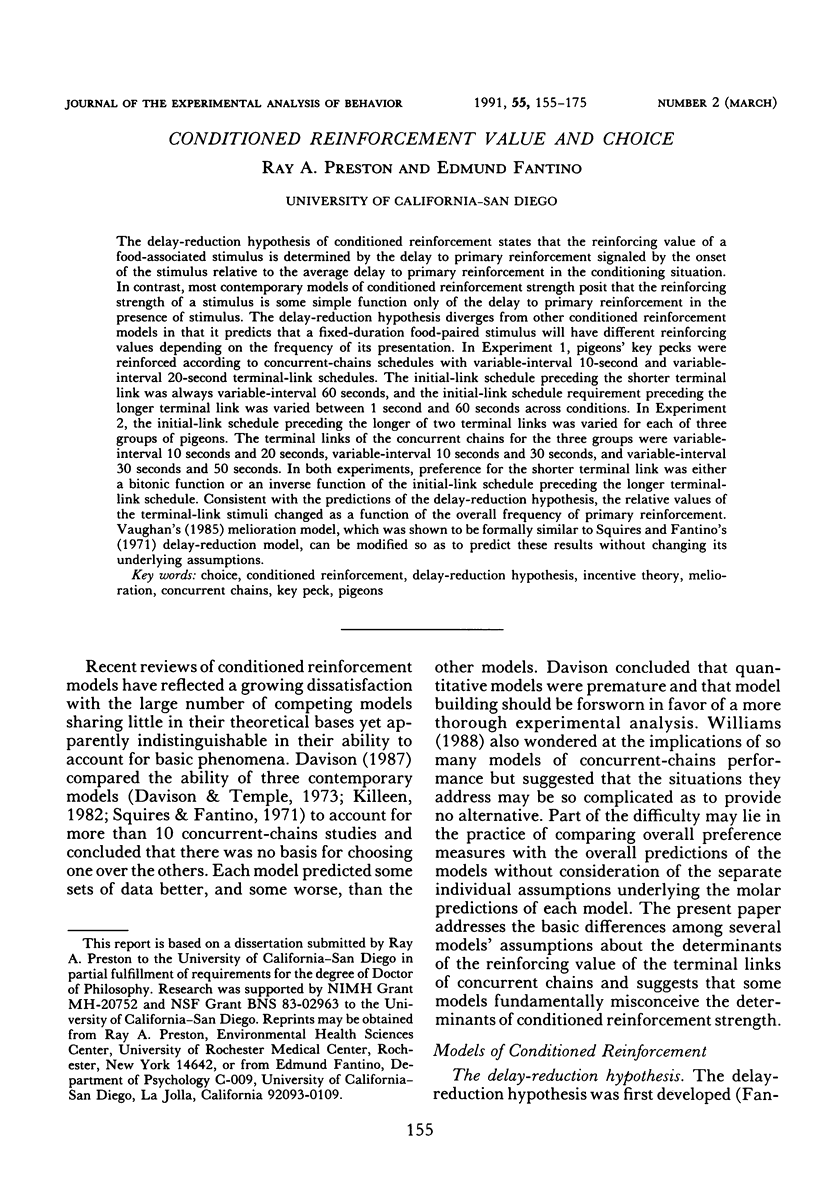

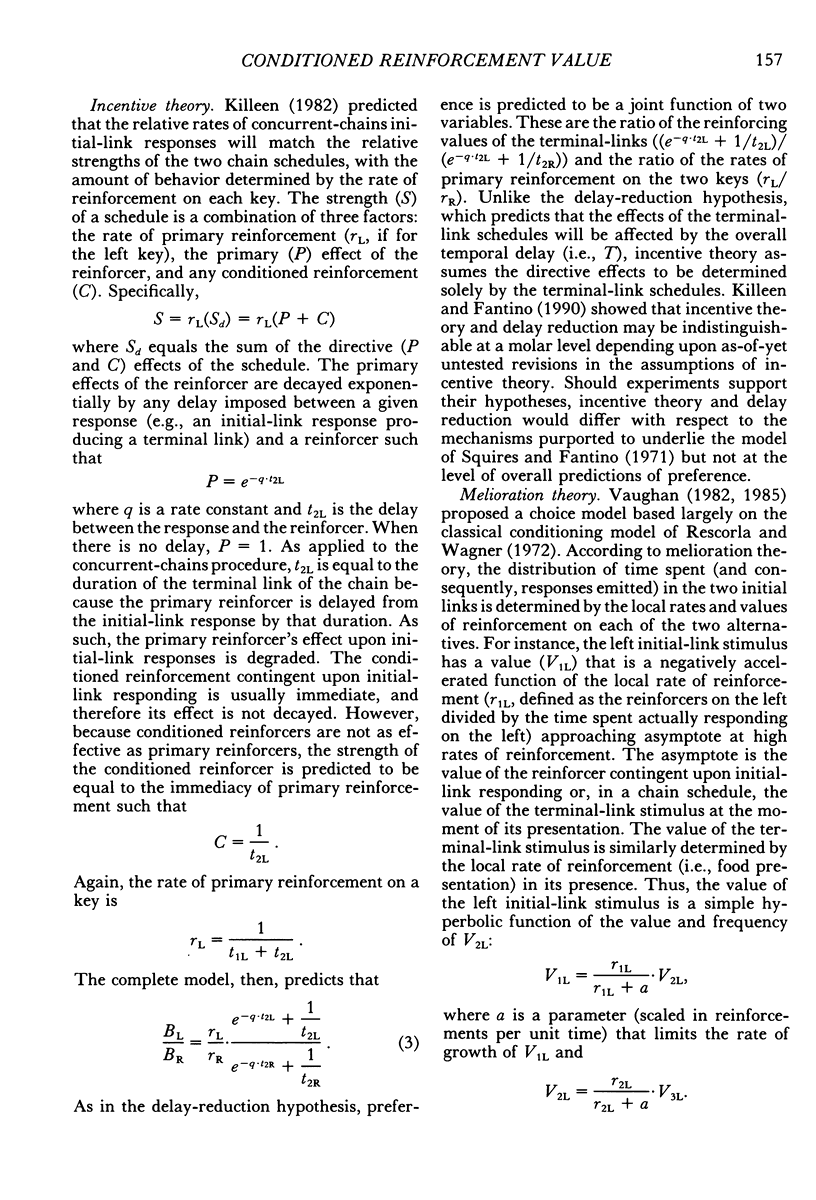

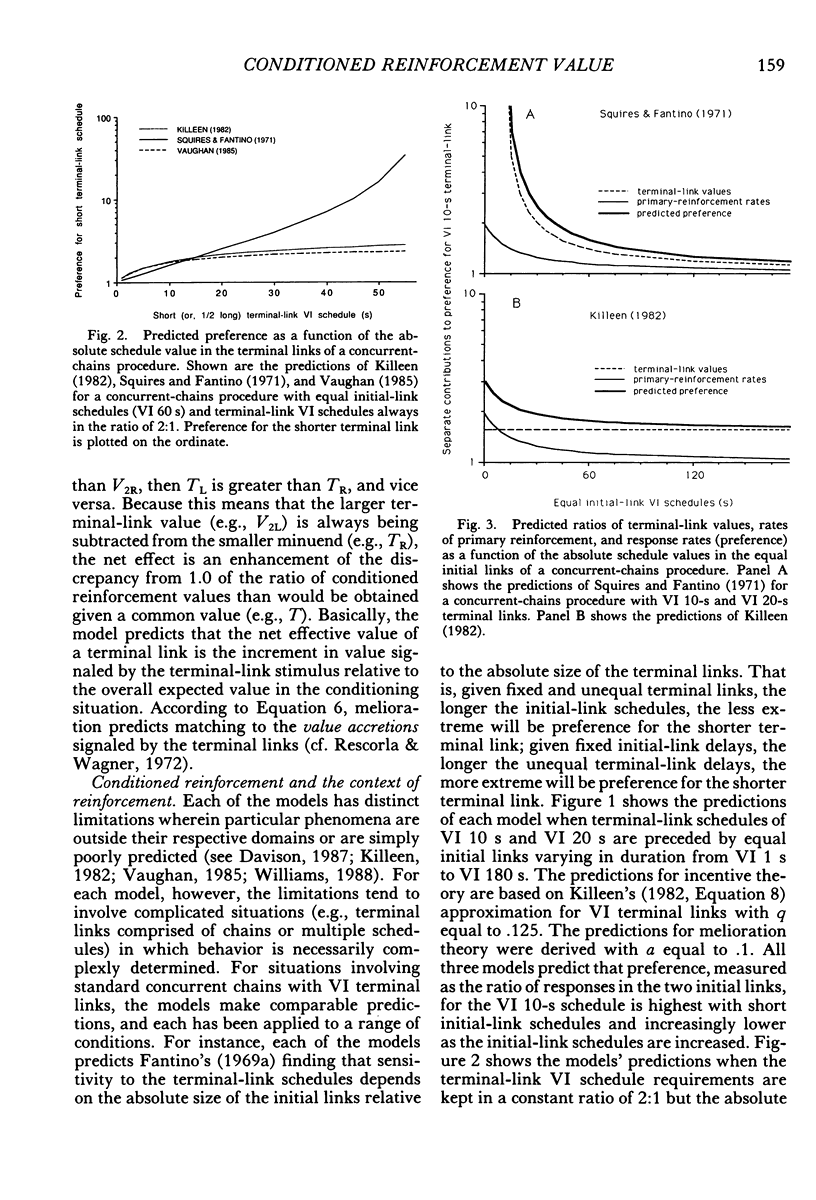
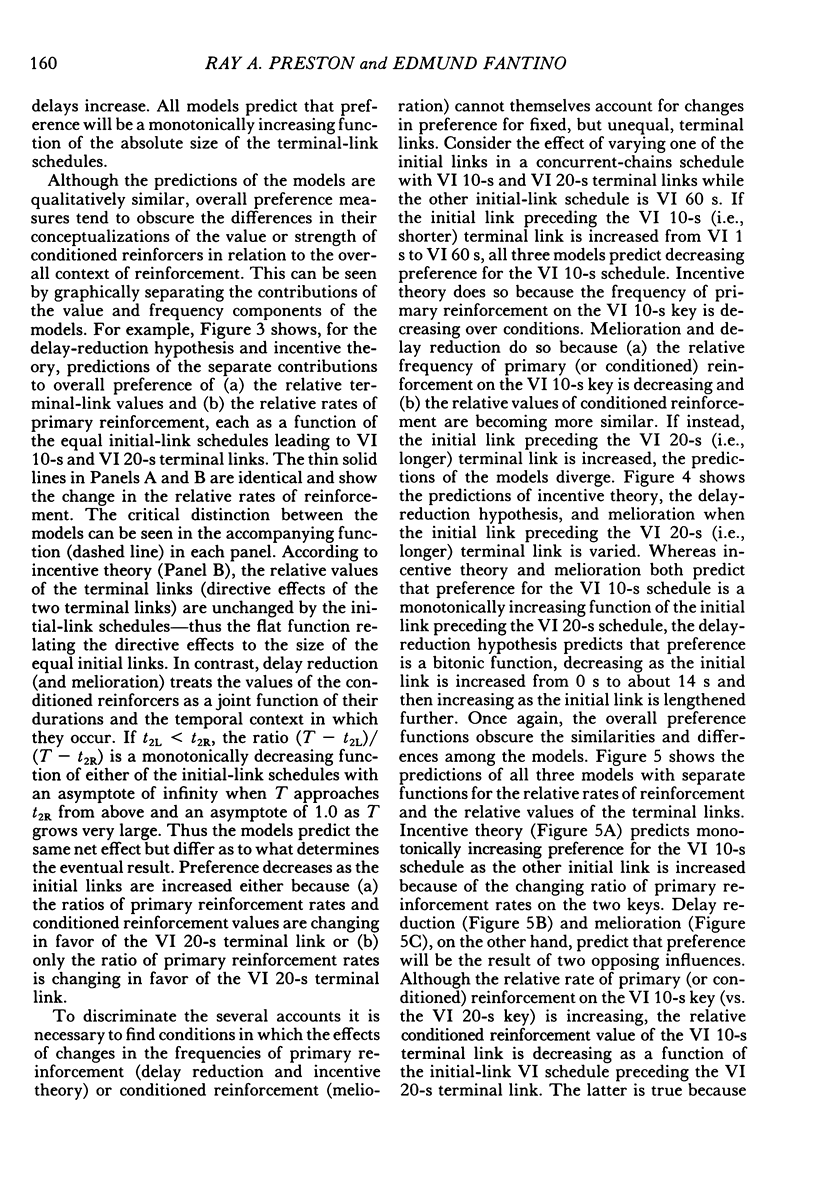
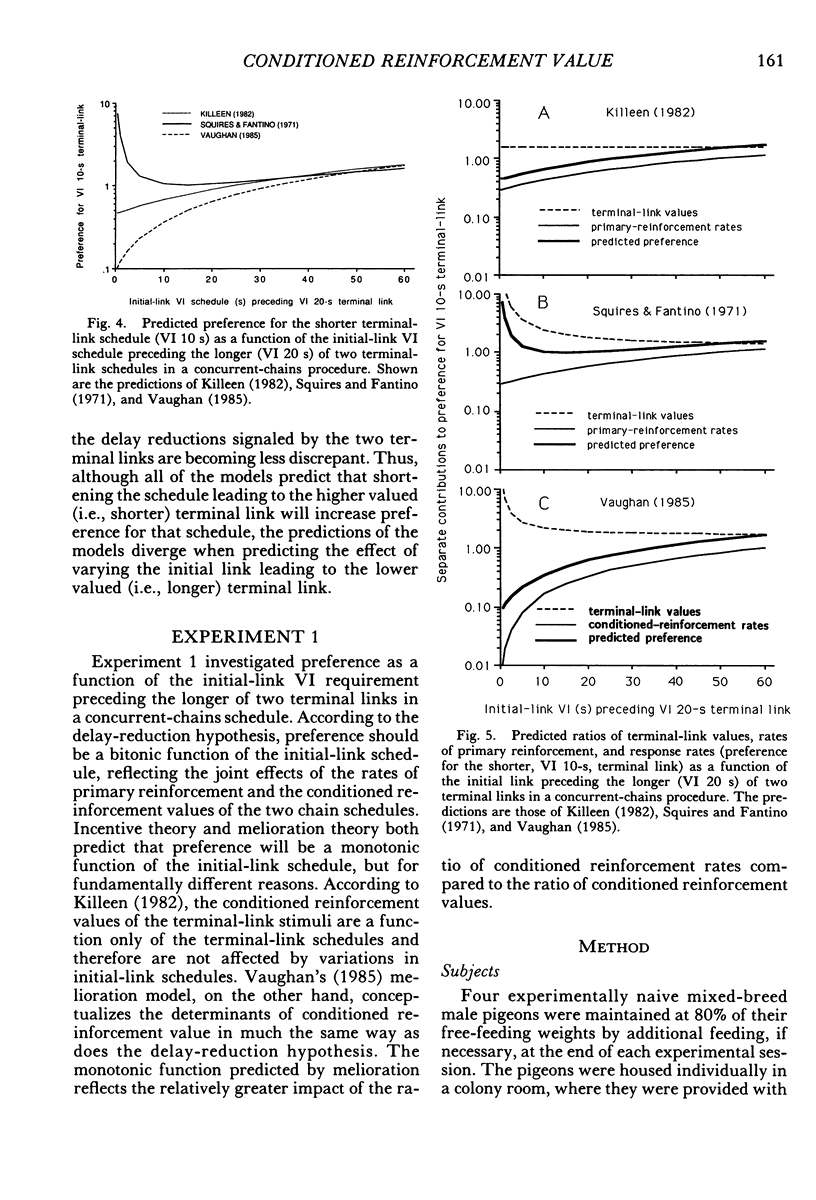
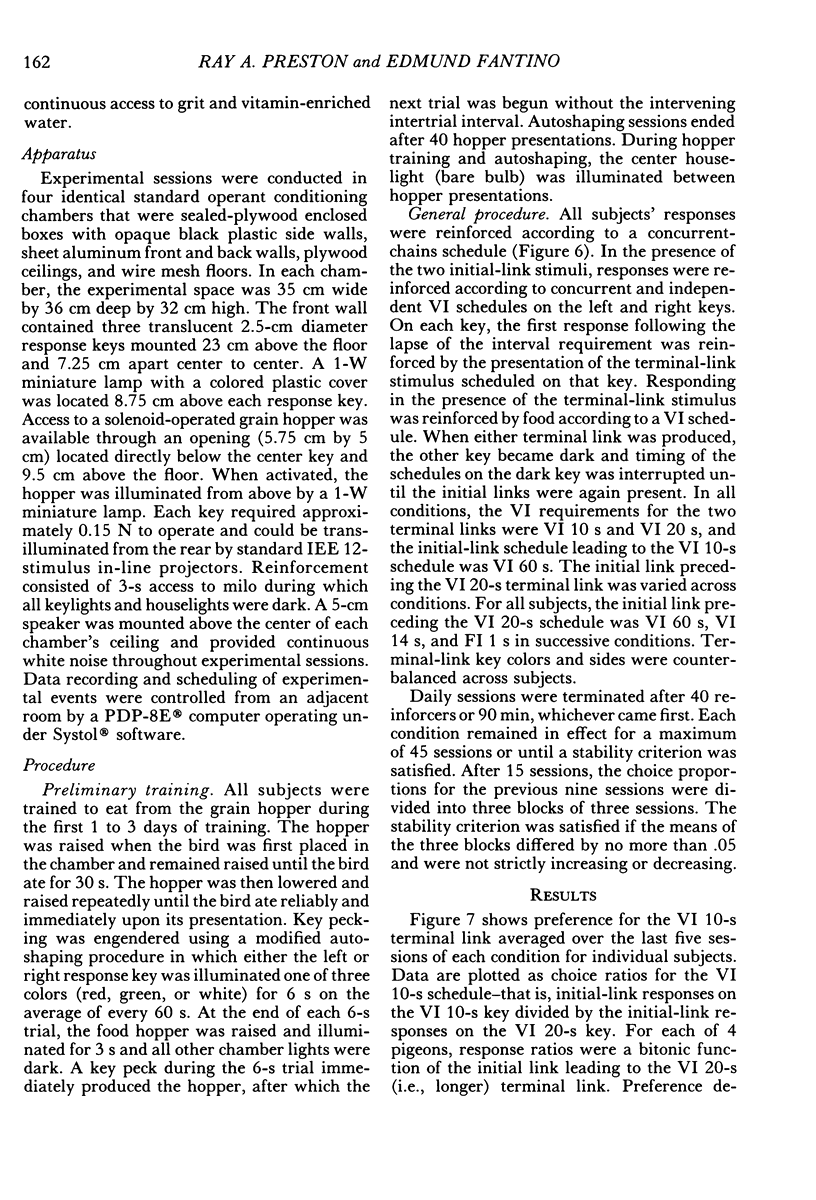
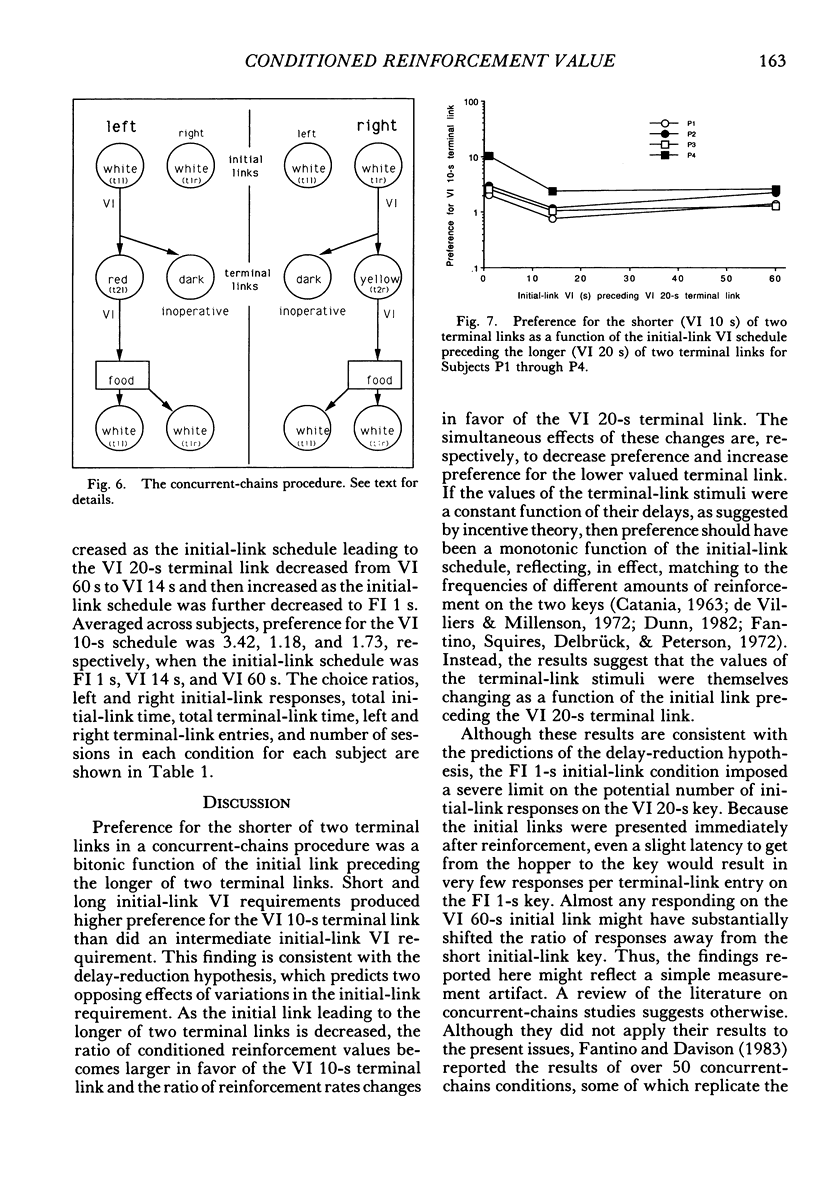
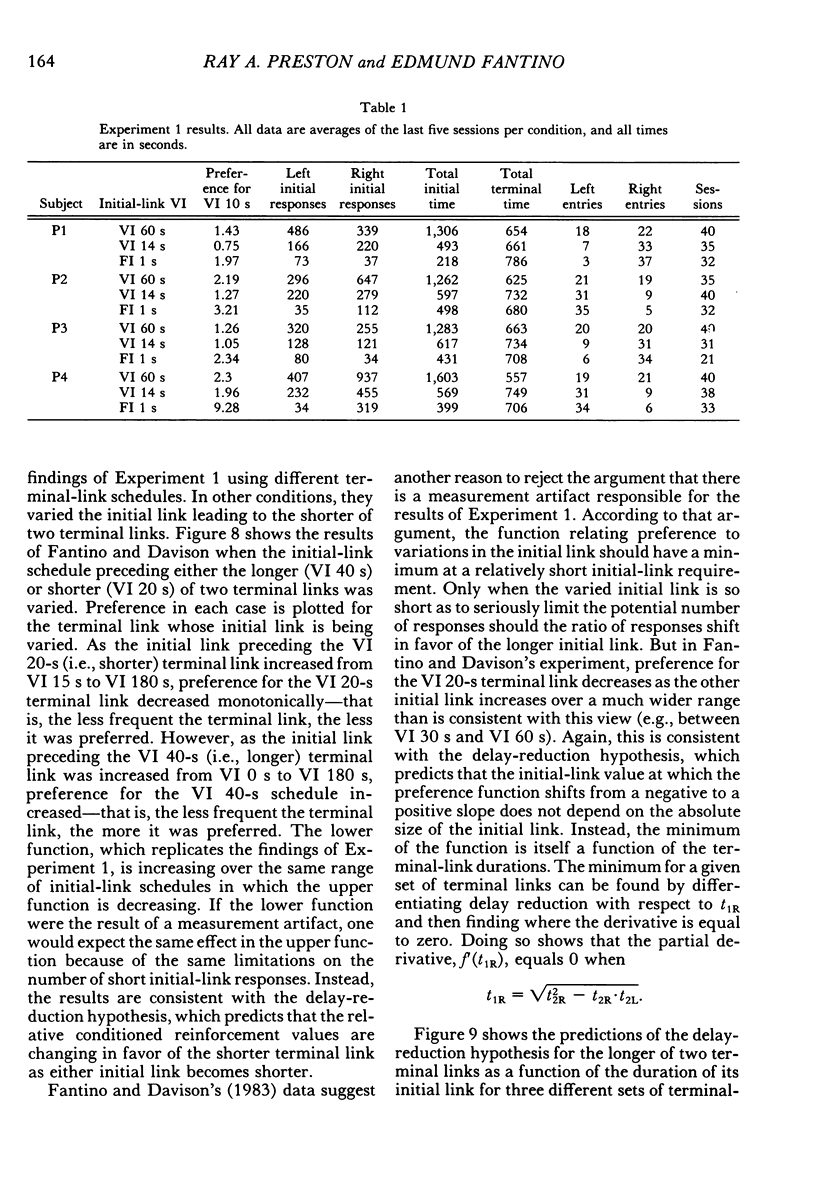
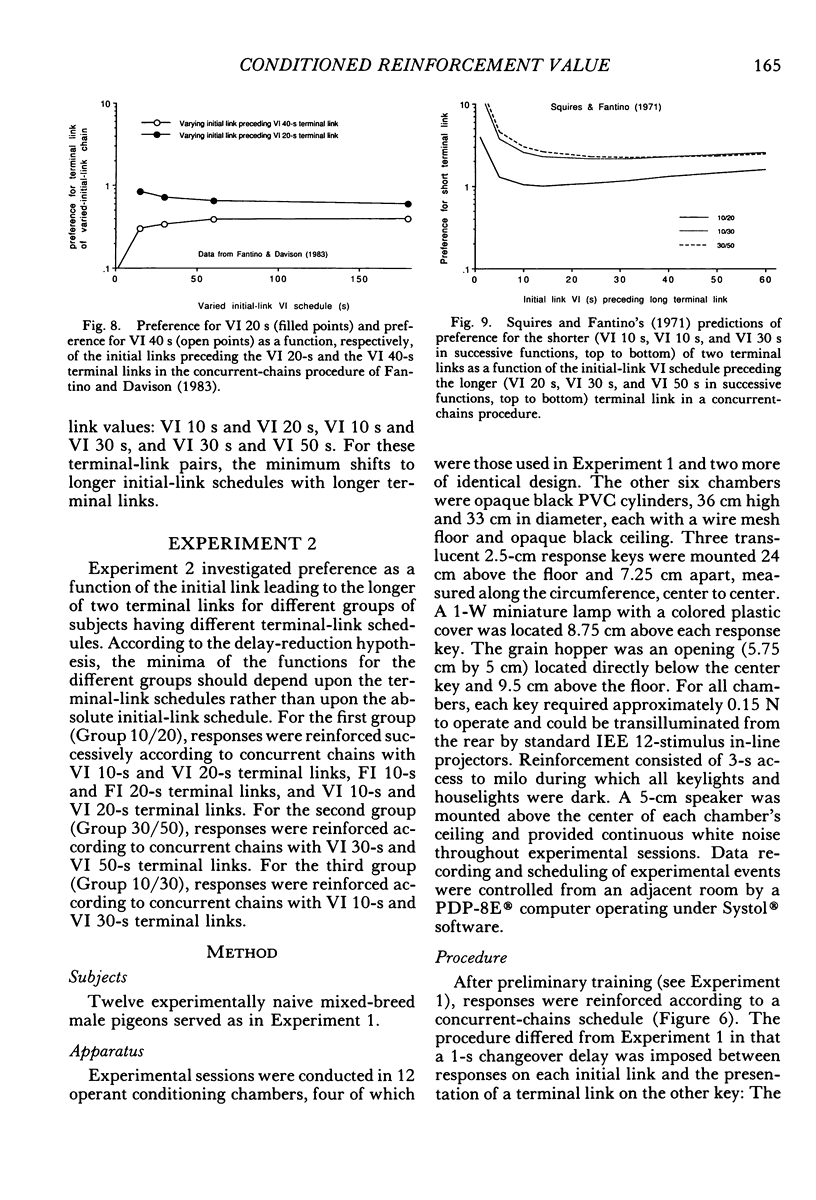
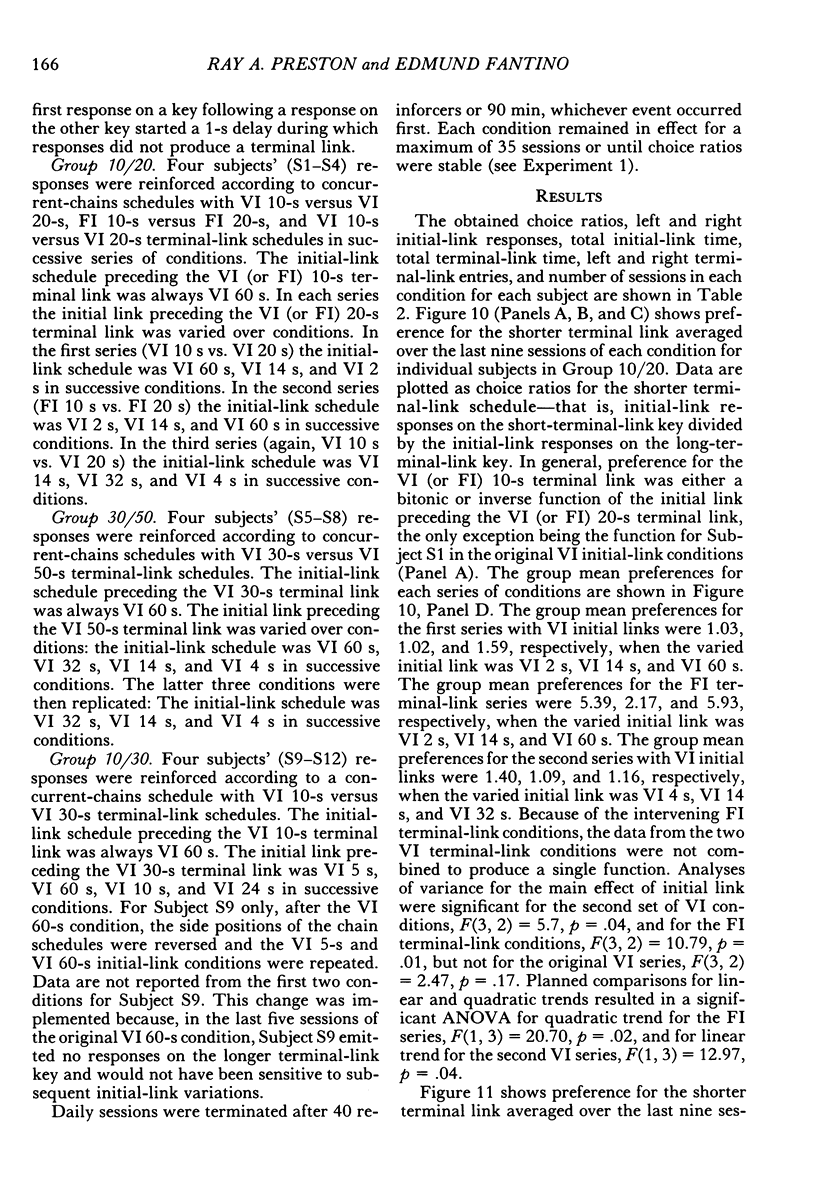

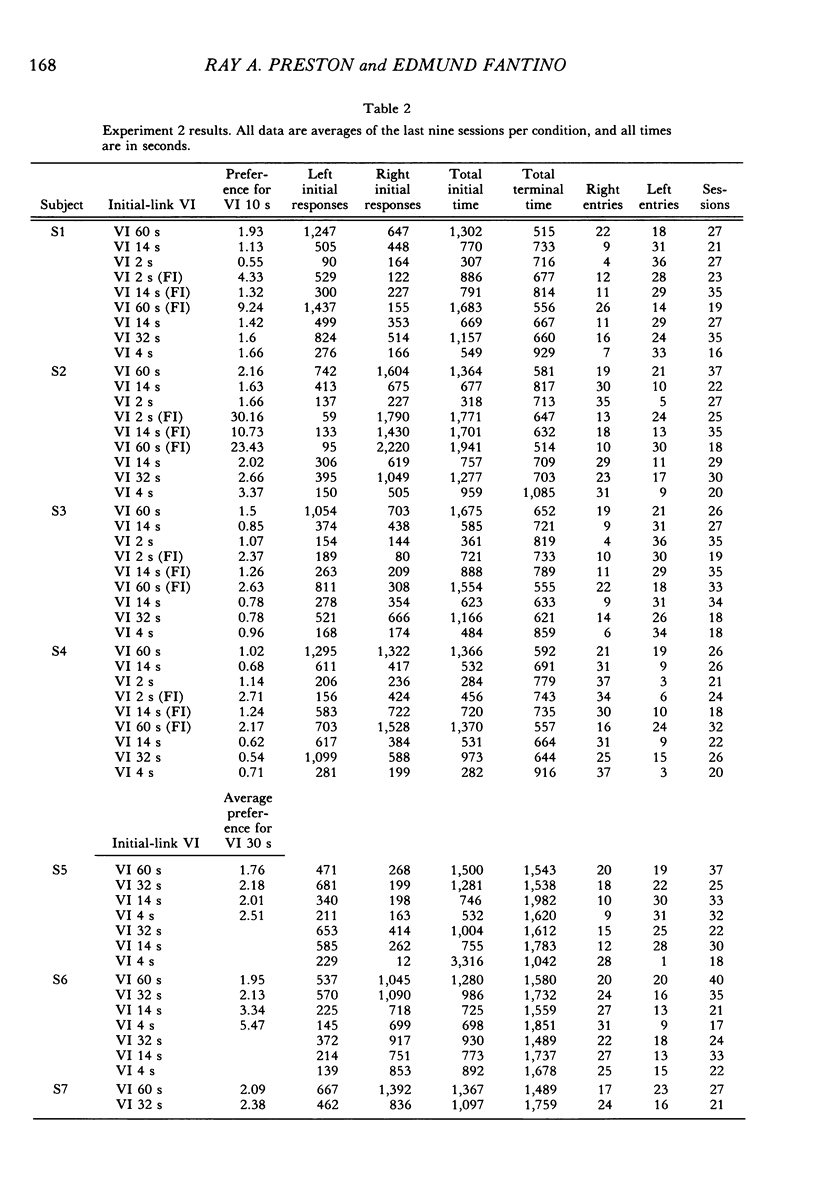
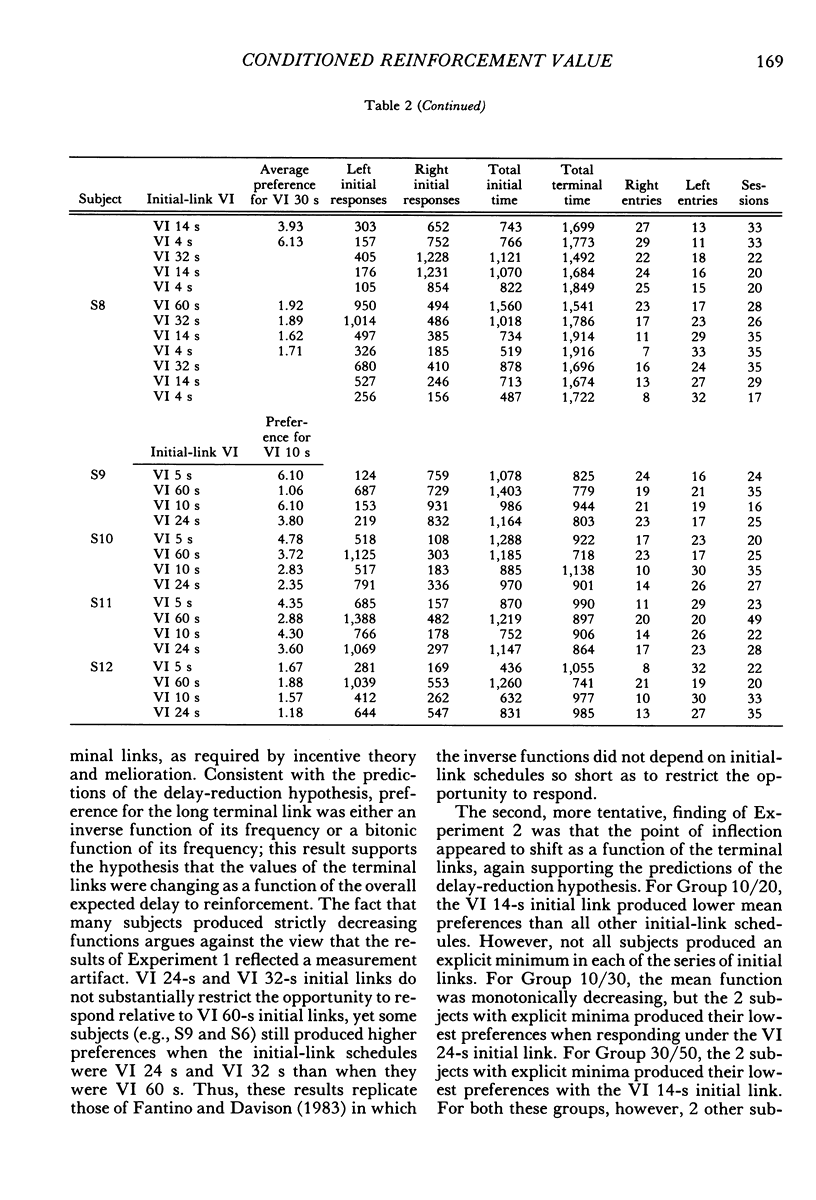
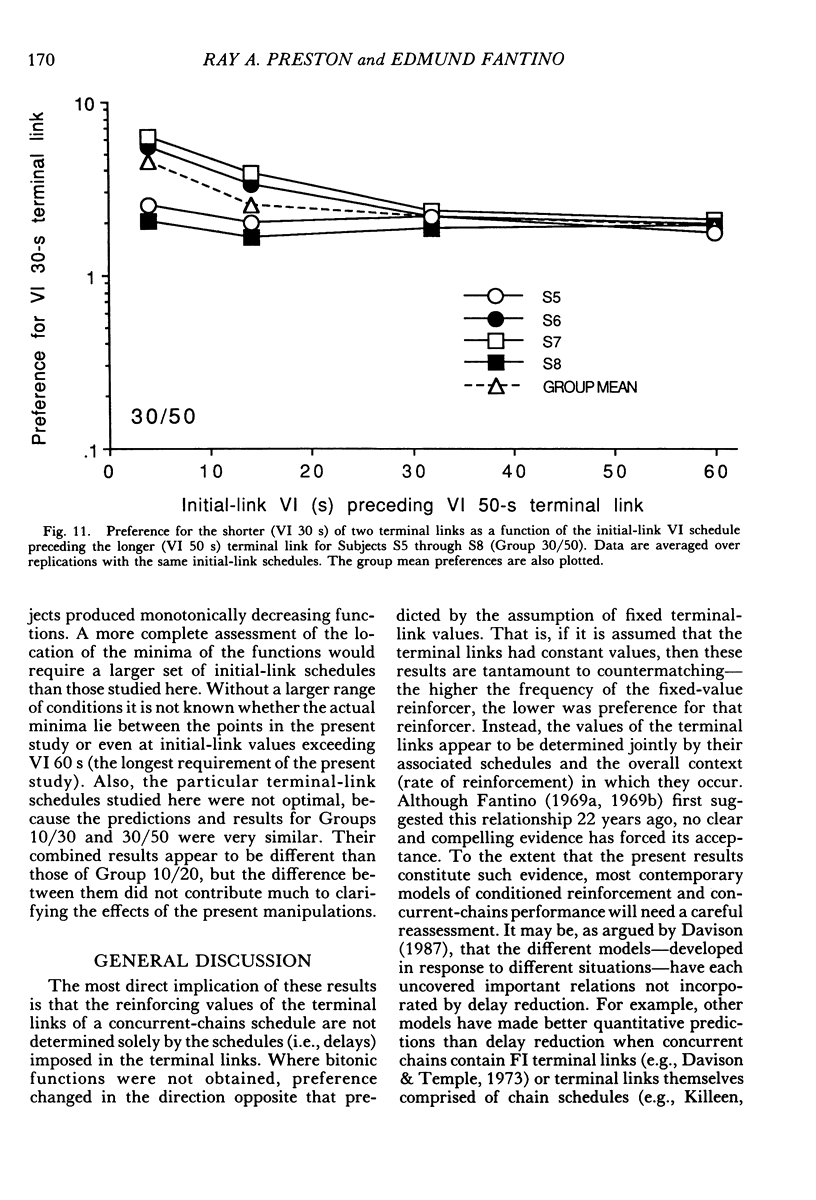
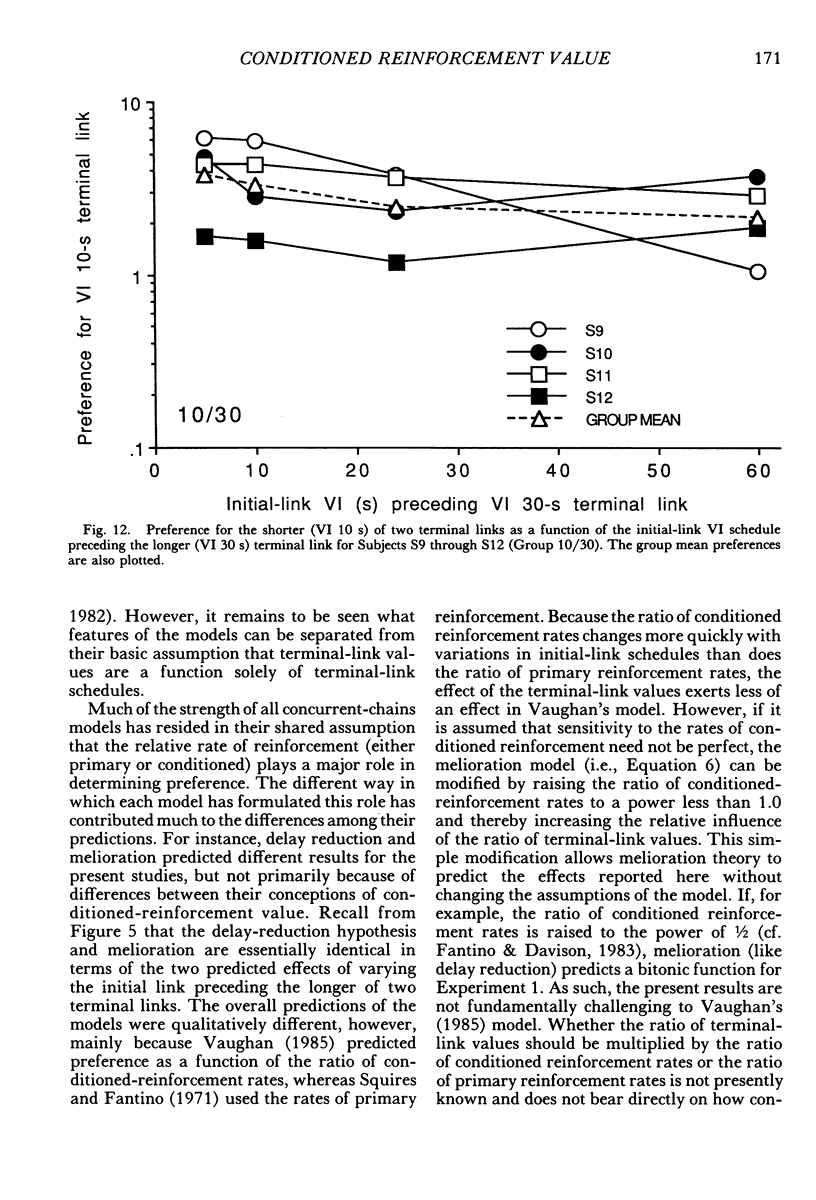
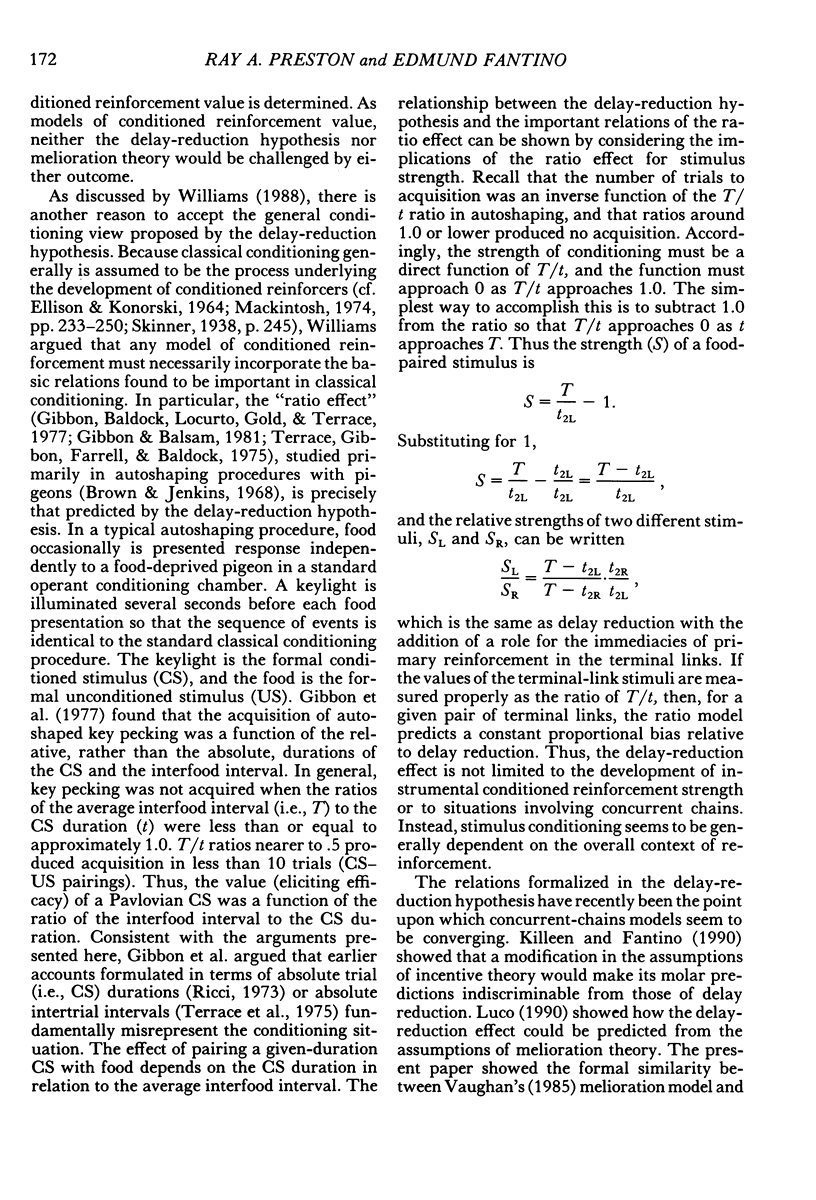
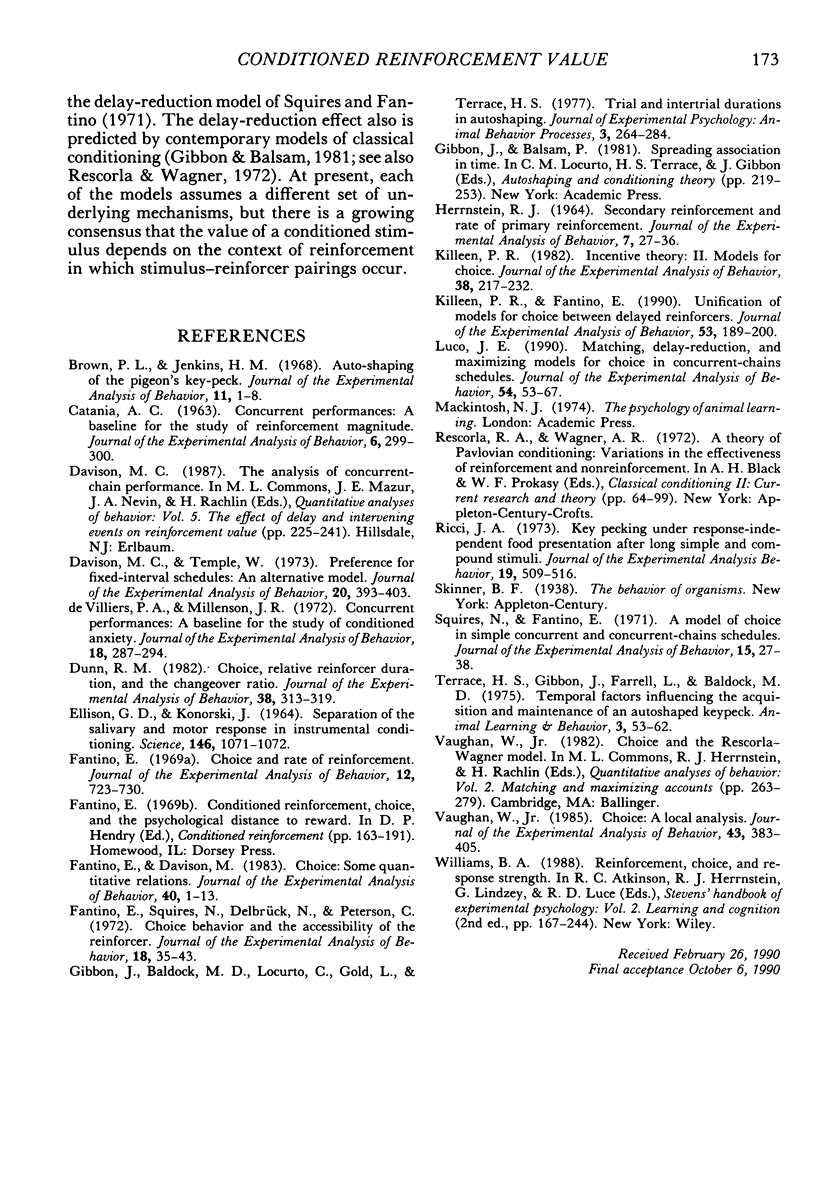
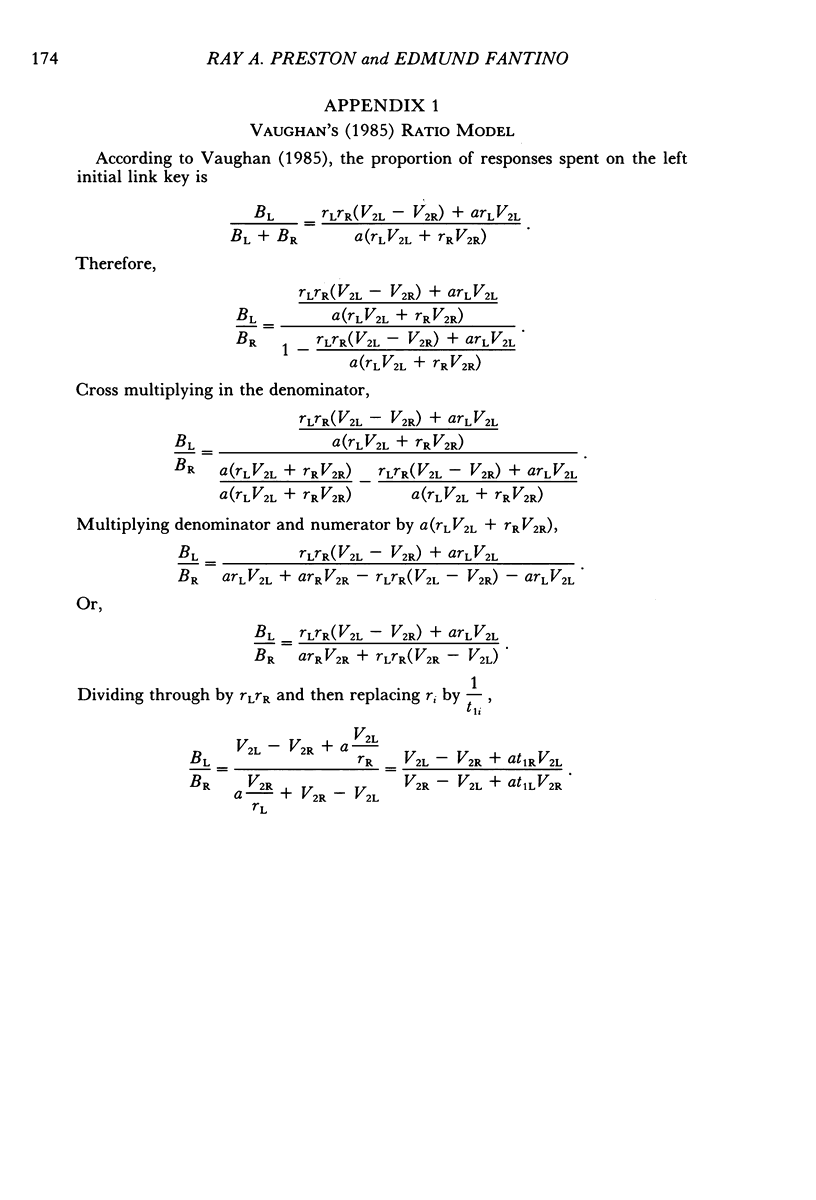

Selected References
These references are in PubMed. This may not be the complete list of references from this article.
- Brown P. L., Jenkins H. M. Auto-shaping of the pigeon's key-peck. J Exp Anal Behav. 1968 Jan;11(1):1–8. doi: 10.1901/jeab.1968.11-1. [DOI] [PMC free article] [PubMed] [Google Scholar]
- CATANIA A. C. Concurrent performances: a baseline for the study of reinforcement magnitude. J Exp Anal Behav. 1963 Apr;6:299–300. doi: 10.1901/jeab.1963.6-299. [DOI] [PMC free article] [PubMed] [Google Scholar]
- Davison M. C., Temple W. Preference for fixed-interval schedules: an alternative model. J Exp Anal Behav. 1973 Nov;20(3):393–403. doi: 10.1901/jeab.1973.20-393. [DOI] [PMC free article] [PubMed] [Google Scholar]
- De Villiers P. A., Millenson J. R. Concurrent performances: a baseline for the study of conditioned anxiety. J Exp Anal Behav. 1972 Sep;18(2):287–294. doi: 10.1901/jeab.1972.18-287. [DOI] [PMC free article] [PubMed] [Google Scholar]
- Dunn R. M. Choice, relative reinforcer duration, and the changeover ratio. J Exp Anal Behav. 1982 Nov;38(3):313–319. doi: 10.1901/jeab.1982.38-313. [DOI] [PMC free article] [PubMed] [Google Scholar]
- ELLISON G. D., KONORSKI J. SEPARATION OF THE SALIVARY AND MOTOR RESPONSES IN INSTRUMENTAL CONDITIONING. Science. 1964 Nov 20;146(3647):1071–1072. doi: 10.1126/science.146.3647.1071. [DOI] [PubMed] [Google Scholar]
- Fantino E. Choice and rate of reinforcement. J Exp Anal Behav. 1969 Sep;12(5):723–730. doi: 10.1901/jeab.1969.12-723. [DOI] [PMC free article] [PubMed] [Google Scholar]
- Fantino E., Davison M. Choice: Some quantitative relations. J Exp Anal Behav. 1983 Jul;40(1):1–13. doi: 10.1901/jeab.1983.40-1. [DOI] [PMC free article] [PubMed] [Google Scholar]
- Fantino E., Squires N., Delbrück N., Peterson C. Choice behavior and the accessibility of the reinforcer. J Exp Anal Behav. 1972 Jul;18(1):35–43. doi: 10.1901/jeab.1972.18-35. [DOI] [PMC free article] [PubMed] [Google Scholar]
- HERRNSTEIN R. J. SECONDARY REINFORCEMENT AND RATE OF PRIMARY REINFORCEMENT. J Exp Anal Behav. 1964 Jan;7:27–36. doi: 10.1901/jeab.1964.7-27. [DOI] [PMC free article] [PubMed] [Google Scholar]
- Killeen P. R., Fantino E. Unification of models for choice between delayed reinforcers. J Exp Anal Behav. 1990 Jan;53(1):189–200. doi: 10.1901/jeab.1990.53-189. [DOI] [PMC free article] [PubMed] [Google Scholar]
- Killeen P. R. Incentive theory: II. Models for choice. J Exp Anal Behav. 1982 Sep;38(2):217–232. doi: 10.1901/jeab.1982.38-217. [DOI] [PMC free article] [PubMed] [Google Scholar]
- Luco J. E. Matching, delay-reduction, and maximizing models for choice in concurrent-chains schedules. J Exp Anal Behav. 1990 Jul;54(1):53–67. doi: 10.1901/jeab.1990.54-53. [DOI] [PMC free article] [PubMed] [Google Scholar]
- Ricci J. A. Key pecking under response-independent food presentation after long simple and compound stimuli. J Exp Anal Behav. 1973 May;19(3):509–516. doi: 10.1901/jeab.1973.19-509. [DOI] [PMC free article] [PubMed] [Google Scholar]
- Squires N., Fantino E. A model for choice in simple concurrent and concurrent-chains schedules. J Exp Anal Behav. 1971 Jan;15(1):27–38. doi: 10.1901/jeab.1971.15-27. [DOI] [PMC free article] [PubMed] [Google Scholar]
- Vaughan W. Choice: A local analysis. J Exp Anal Behav. 1985 May;43(3):383–405. doi: 10.1901/jeab.1985.43-383. [DOI] [PMC free article] [PubMed] [Google Scholar]


